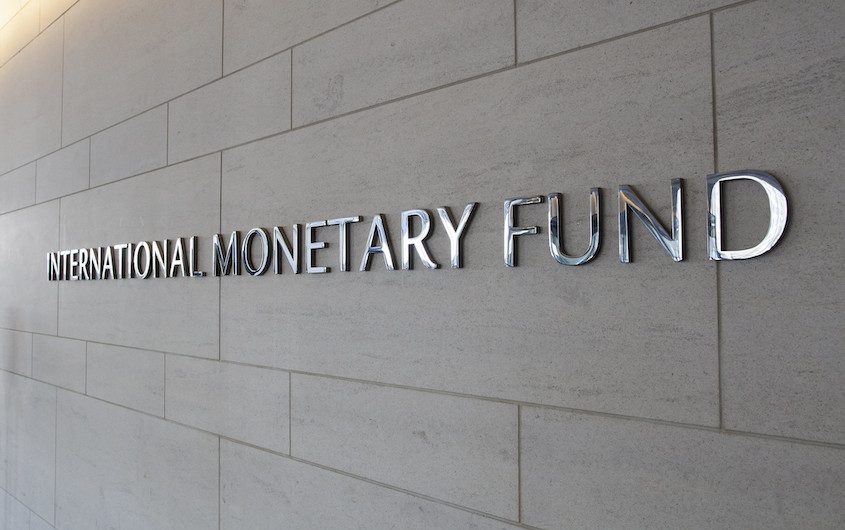
World Bank Photo Collection via Flickr
As the U.S. Economy Gains Steam, the Trade Deficit Debate Could Return

Peter S. Rashish
Vice President; Director, Geoeconomics Program
Peter S. Rashish, who counts over 30 years of experience counseling corporations, think tanks, foundations, and international organizations on transatlantic trade and economic strategy, is Vice President and Director of the Geoeconomics Program at AICGS. He also writes The Wider Atlantic blog.
Mr. Rashish has served as Vice President for Europe and Eurasia at the U.S. Chamber of Commerce, where he spearheaded the Chamber’s advocacy ahead of the launch of the Transatlantic Trade and Investment Partnership. Previously, Mr. Rashish was a Senior Advisor for Europe at McLarty Associates, Executive Vice President of the European Institute, and a staff member and consultant at the International Energy Agency, the World Bank, UNCTAD, the Atlantic Council, the Bertelsmann Foundation, and the German Marshall Fund.
Mr. Rashish has testified before the House Financial Services Subcommittee on International Monetary Policy and Trade and the House Foreign Affairs Subcommittee on Europe and Eurasia and has advised three U.S. presidential campaigns. He has been a featured speaker at the Munich Security Conference, the Aspen Ideas Festival, and the Salzburg Global Seminar and is a member of the Board of Directors of the Jean Monnet Institute in Paris and a Senior Advisor to the European Policy Centre in Brussels. His commentaries have been published in The New York Times, the Financial Times, The Wall Street Journal, Foreign Policy, and The National Interest, and he has appeared on PBS, CNBC, CNN, NPR, and the BBC.
He earned a BA from Harvard College and an MPhil in international relations from Oxford University. He speaks French, German, Italian, and Spanish.
During the Biden administration’s first 100 days, a milestone that will be reached on May 1, trade policy has so far not played the central role it did under the previous White House. That is a refreshing development in many ways, since during the four years of the Trump administration trade policy was often more about wanton assertion of U.S. power than a patient and strategic promotion of U.S. interests.
Trade policy’s lower profile also makes sense given that several top-line challenges the new administration has identified—overcoming the pandemic, fostering a more equitable economy, shifting to a low-carbon economy—will mainly require domestic policy solutions. One important exception is the systemic competition with China, where U.S. engagement with its allies will be essential to success.
But trade may yet regain prominence—for the wrong reason.
Because of the Biden administration’s strong fiscal response to the economic consequences of COVID-19, its planned infrastructure spending, as well as the relatively fast U.S. vaccination roll-out, the U.S. economy is poised for a solid rebound. The International Monetary Fund, which is holding its spring meetings this week, is forecasting that the United States will grow at a rate of 6.4 percent in 2021, compared to 4.4 percent in the Eurozone and 3.6 percent in Germany, its largest member.
With at least $4 trillion in committed or planned new spending—equivalent to about a fifth of the size of the U.S. economy—some of those dollars are almost certain to flow overseas as U.S. consumers and businesses also purchase foreign-made products and services, increasing the size of the current account (or trade) deficit.
With the United States growing faster than the EU in 2021, some of the $4 trillion in new U.S. spending will flow across the Atlantic, which could lead to a U.S. trade deficit with Europe.
On the one hand, it makes sense for the United States to act as a locomotive that helps Europe (which has been slower in vaccinating its population) to emerge from the crisis. With transatlantic trade exceeding $1 trillion annually, and at least a third of that trade between the same firms, U.S. and EU prosperity are deeply inter-linked. On the other hand, while transatlantic trade is roughly in balance now, the additional demand from the United States could push it into a trade deficit with Europe.
The United States has stubbornly run a trade deficit with the world for most of the last 50 years. But that didn’t stop former President Trump from thinking that he could reduce its size by using trade policy tools like tariffs. Unsurprisingly, that effort failed. While Trump is gone, that does not mean his approach to the U.S. trade deficit won’t make a comeback. If it does, there could be new demands for tariffs, including on European or other like-minded trading partners.
One way to counter those siren calls is by working with Europe to create a more level playing field for the global economy through new trade rules that reflect transatlantic values, which will favor U.S. and EU products and services. Another is to point to the Biden administration’s $2 trillion infrastructure plan: a more competitive workforce equipped with modern and efficient know-how and production processes will help the United States take full advantage of what a fairer trading system has to offer.
But an important message is that until Americans forego their chronic inability to save, the United States is likely to run a trade deficit. And since the deficit has been highest at times of strong economic growth, unless it becomes excessive perhaps it is something the country can choose to live with.









